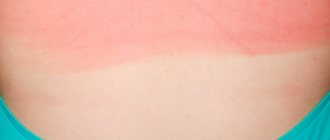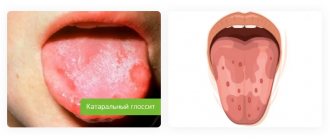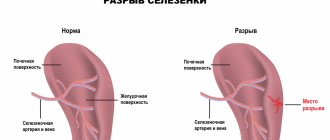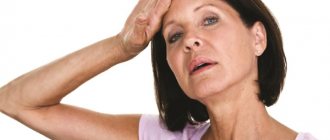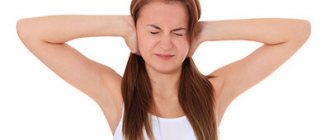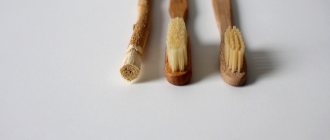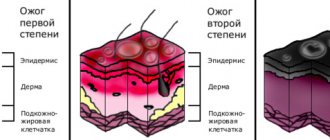From the first warm days of spring until the beginning of autumn frosts, it is pleasant to dress as lightly as possible and show off a beautiful figure. Many people spend weekends and holidays on the beach, taking their children with them, believing that sunbathing is good for health. It has been established that exposure to the sun strengthens the immune system, promotes the production of vitamin D, and improves the condition of bone tissue. A soft golden or dark chocolate tan is associated with travel and adventure, vacations on the sea coast and tropical islands.
But strong exposure to ultraviolet rays does not provide health benefits. Tanning is a protective reaction of the skin , leading to a change in its color. In its lower layers, the coloring pigment melanin is produced to protect against ultraviolet radiation. When exposed to direct sunlight for a long time, skin photoaging accelerates, wrinkles form faster, and the risk of developing tumors increases. Another danger of sun exposure is sunburned skin . The price to pay for carelessness will be pain, peeling, and general deterioration in well-being.
What to do if your skin is sunburned
You can get sunburned not only on the beach, but also while walking around the city, working in your garden, etc. The sun gradually heats the skin and head, and a person does not feel discomfort for a long time, but notices redness, feels a burning sensation, tightness when the skin is already severely burned. Minor burns can be treated at home, but if blisters develop, you should see a doctor.
At the first signs of burning or overheating, you need to go indoors or into the shade. If this is not possible, cover open areas of the body with clothing, a towel, or thick fabric. Replenish the lack of fluid in the body. Drink clean, cool water or warm, but not hot tea. To reduce discomfort, apply after sun cream or other emollient to the skin unless there are blisters or open wounds. If the damage is minor, your skin to recover from a sunburn .
Folk remedies
“Grandma’s recipes” can also have an effect on sunburn. These are sour cream, milk, kefir, egg white. These products contain proteins that prevent moisture loss and restore skin.
Important! Traditional medicines will really be effective if used at least twice a day. But, no matter what method is chosen to eliminate sunburn, it is imperative to moisturize the skin afterwards.
In terms of choosing creams, preference should be given to those containing hyaluronic acid, cactus extracts, aloe, sea buckthorn, green tea, and rosemary. Medical aerosols against sunburn and after-sun preparations do a good job of doing this.
If your child gets a sunburn
If you find that your child has sunburn, you should prepare a cold bath for him. Bathing in a bath with oatmeal gives a good effect. To do this, you need to take regular oatmeal, pour it into a cloth bag, tie it with thread and put it in the bath or hang it under the shower. The child should stay in such a bath for 5–15 minutes, after which he should be gently blotted with a towel so that a small layer of oatmeal powder remains on the skin. This will help relieve itching and soften the skin.
It is necessary that the child receives a sufficient amount of fluid. On the day of the burn and the next three days, the child should drink a lot of water. For damaged skin of a child, the general remedies described above are suitable.
Another important point is the child’s nutrition. Vitamin C can strengthen the immune system and also have a slight anti-inflammatory effect. It is better to give preference to varieties with bioflavonoids. The dosage for a child depends on his age, multiplied by 50 milligrams. The medicine is given twice a day, but if diarrhea begins, the dose should be reduced.
It is advisable to use liquid or powdered (non-acidic) vitamin C. These solutions are suitable for children and infants and can be used by adding to juice. Zinc will help strengthen the immune system and speed up skin regeneration. The dose for children under 2 years old is 5 milligrams, over two years old - 10–15 milligrams. The drug is given for two weeks, after which the course ends.
The carotenoid complex is given prophylactically. Carotenoids often help absorb sunlight and protect the skin from damage. Given with a multivitamin complex.
Important! When your child's skin becomes blistered and the temperature cannot be brought down, you should immediately consult a doctor.
When treating sunburn, proper diet is important. It is advisable to include fresh fruits and vegetables in your diet, as they contain large amounts of vitamins E and C, and without them, skin healing and regeneration will slow down. If for some reason it is not possible to consume fresh fruits and vegetables, care should be taken to take synthesized vitamins. They are present on the shelves of almost all pharmacies. There you can select a pharmacological drug based on the active ingredient ibuprofen. Timely intake of ibuprofen will relieve the skin inflammatory reaction, normalize the temperature of the human body, and significantly reduce the intensity of pain.
Signs of skin burning in the sun
To prevent deep burns while in the sun , you need to periodically check for signs of burning. The first symptom is redness of the skin . Pain and other unpleasant sensations may not be felt. They appear later.
It is necessary to determine the degree of damage to the skin. If there is redness, mild pain, but no blisters, you need to provide first aid and the redness will go away in a few days. The skin may begin to peel. This is not dangerous, but the risk of repeated, more severe burns increases when exposed to the sun.
If blisters appear, you need to consult a doctor and treat with anti-burn ointments, drugs that relieve inflammation and prevent infection. Treatment is carried out under the supervision of a doctor. Patients often develop fever, swelling, headaches, weakness, and palpitations.
Popular drugs
PanthenolSpray effectively relieves skin inflammation. The product contains dexpanthenol, and therefore has an anti-inflammatory and healing effect. Experts noted an obstacle to the development of inflammation when using the drug, rapid elimination of burning, redness and other unpleasant signs of a burn. PanthenolSpray is an original medicinal product that has been tested over the years and has gained wide popularity. Pharmacies offer many analogues with similar packaging.
If chills are observed and the general condition is disturbed, non-steroidal anti-inflammatory drugs are used - Ibuprofen, Paracetamol. You can also use aspirin, a drug from the salicylates group.
To prevent skin dehydration, experts recommend creams based on chamomile and calendula extract, Aloe Vera, and vitamin E. The components will help the skin absorb moisture and retain it for a long time.
Important! Treatment of sunburn does not allow the use of alcohol-containing lotions and other cosmetics, since they further dry the skin and cause additional injury. In addition, when washing burnt skin, you should not use soap, or overload it with too greasy creams.
Important! When blisters appear, it is absolutely unacceptable to pierce them.
3. Pain relief. Paracetamol, Aspirin, Acetaminophen and Ibuprofen help to cope with pain. Itching and burning are reduced by antihistamines. Aspirin in combination with ibuprofen inhibits the formation of toxic substances that cause swelling and redness of the skin. A regular cool bath helps reduce fever and pain. Symptoms of burning are caused by active blood flow, which is caused by severe inflammation, and cold water constricts blood vessels and alleviates the condition. But you can’t rush to get into the shower - these are the same microtraumas, unnecessary pain.
First aid
If you have sunburn , you need to get dressed and go into the shade or indoors. A cool (but not cold) shower or compress on the affected parts of the body will help relieve unpleasant symptoms. Cool and cleanse the skin. To quickly restore damaged epidermis, prevent the appearance of blisters and peeling, apply anti-burn ointment with panthenol to it.
If blisters appear, the skin should be cooled, washed with clean water without soap and ointment applied, and then consult a doctor. He will prescribe treatment that will avoid infection of the wounds that appear after the blisters rupture.
If a significant surface of the body is burned, the person has a fever, dizziness, increased heart rate, nausea, vomiting, you need to give an antipyretic, anti-inflammatory drug and quickly take him to a medical facility or call an ambulance. Sunburn can cause problems with the cardiovascular system.
Folk remedies
First aid for burns caused by ultraviolet radiation should be provided as quickly as possible. But the home medicine cabinet does not always have the necessary medications. They can be replaced with folk remedies. To improve your general condition in the absence of antipyretics, if the temperature has risen slightly, you can drink cool black or green tea with lemon or mineral water. You can apply a cool compress to your forehead.
To cool and soothe burned skin, you can make a gauze compress from cool green tea, a decoction of parsley, chamomile, calendula, and oak bark. If your face turns red after a trip to the beach or a walk on a sunny day, you can apply a fresh cabbage leaf, chopped parsley to the burned areas, and smear them with honey. look good the next day . To reduce the risk of infection of the burned areas and moisturize them, you can wipe the skin with aloe leaves.
A good tan is beautiful and painless.
Sunstroke is a lesion caused by prolonged exposure to sunlight on an uncovered head. On a clear day, it is possible to get sunstroke if you stay outside for a long time without a hat.
Heatstroke is excessive overheating of the human body as a whole. Such impacts occur in windless, cloudy, but hot weather during prolonged heavy physical activity and difficult long treks. Heat stroke is more likely if a person is insufficiently physically prepared, severely tired and thirsty.
Symptoms of sun and heatstroke:
- headache;
- increased heart rate;
- impaired coordination;
- redness and then paleness of the skin;
- dizziness;
- decrease in breathing intensity and pulse;
- lethargy and weakness;
- noise in ears;
- nose bleed;
- nausea, vomiting;
- convulsions, fainting.
What not to do if you have sunburn
Complications from sunburn often occur due to improper treatment. So that they pass without consequences:
- do not apply ice to burned areas, do not take a cold shower - a sharp temperature change will accelerate the development of the inflammatory process;
- do not puncture blisters with a needle or other sharp objects - this increases the risk of infection;
- do not wipe the skin with alcohol-containing solutions - it needs to be moisturized, and alcohol dries it out, which will increase peeling;
- do not lubricate burned areas with olive, sunflower or other vegetable oils - they form a greasy film, which interferes with normal air exchange and natural cooling;
- if blisters appear, there are wounds, acne - do not apply fermented milk products;
- Do not use hard washcloths or peelings to speed up exfoliation, as you may injure the skin.
At this time, you need to soften it, moisturize it and protect it from ultraviolet radiation with sunscreen or thick clothing, do not use scrubs, hard washcloths, do not visit the sauna or take hot baths.
How to choose a cosmetic product that protects against ultraviolet radiation
Sun cream can have different levels of protection. It is designated SPF with various coefficients. For a walk around the city on a clear spring day, a cream with SPF 2-5 is enough. If you are going to be outside for several hours (picnic, working in your garden), you need a product with SPF 5-10. For those who have white skin prone to freckles, it is better to use sunscreen cosmetics that provide intense protection (SPF 20-30). When going on holiday to a region with a hotter climate, take SPF 50 cream with you. If you want to swim, use a waterproof product. Sunscreen be applied 20 minutes before leaving the house.
To look good on hot days and prevent the appearance of early wrinkles, choose products containing vitamins and antioxidants. They protect not only from ultraviolet rays, but also take care of the skin.
How to choose after-sun cosmetics
To ensure that your skin quickly recovers after sunbathing and looks -sun cream or milk . It contains hydrants that replenish water reserves in cells, soothing and softening ingredients that prevent flaking. To quickly heal minor burns, you can use cosmetics rather than medications. It is convenient to use cosmetics produced in the form of sprays. By pressing the sprayer several times, you will apply the product evenly.
Sprays or creams are available that need to be rubbed in with light massage movements for the face and body. It is better to purchase two products from the same brand: one for the face, where the skin is more delicate and requires care, the other for the body. Use them every time you go out in the sun to restore moisture balance and prevent photoaging.
After-sun cosmetics are available for different skin types. For oily skin, a lighter texture is needed, for dry skin - a high content of hyaluronic acid, for sensitive skin - extracts of aloe and other medicinal plants.
Preventing sunburn
look beautiful and avoid burns , you need to dose your exposure to the sun. The best time for sunbathing is before 10-11 am and after 16-17 o'clock. Try not to go out in the sun between 11 a.m. and 4 p.m. To protect your face and body from direct sunlight, wear wide-brimmed hats, a cap with a visor, or other headwear. Don't forget about eye protection - sunglasses will help preserve your vision and slow down the formation of wrinkles in the corners of your eyes.
On hot days, dress in loose, light-colored clothing made from natural fabrics. It reflects ultraviolet rays well and does not interfere with air exchange. If you have delicate, fair skin that is prone to sunburn, be sure to cover your shoulders and back, choose dresses, shirts, and T-shirts with long sleeves.
Drink more clean water and tea, but give up sweet carbonated drinks and coffee. They have a diuretic effect and accelerate moisture loss. And the body needs it to secrete sweat and naturally cool the skin.
Regularly apply sunscreen to exposed areas of your body, even if you only need to walk outside briefly on a sunny day. On the beach, renew it every 2 hours and after swimming.
GBUZ of the Republic of Crimea
Sunburn is damage to the skin by ultraviolet radiation. Not all types of ultraviolet radiation can cause sunburn; only long and medium wave radiation damages the skin - type A and especially type B.1. Ultraviolet radiation - long waves (UVA) can activate rapid production melanin is the pigment of the skin, and accordingly a tan appears, which does not last long, since it is a kind of short-term reaction to radiation. Long waves also affect the deeper layers of the dermis, changing the structure of connective tissue and nearby small blood vessels. In addition, photoaging develops, the elasticity and turgor of the skin are lost. There are studies that statistically confirm the harmful effects of active UVA on the entire body: oxidation processes become more intense (oxidative stress), and epidermal cancer is provoked.
2. Medium wave ultraviolet radiation is called UVB. This type activates the production (synthesis) of new pigment granules in melanocytes, which manifests itself in the form of persistent pigmentation, that is, tanning and age spots. Since UVB not only promotes the synthesis of melanin, but also significantly increases the density of the upper layer of the skin - the epidermis, moderate doses of such radiation are quite safe. Excessive exposure to type B radiation can also provoke melanoma (skin cancer).
Signs of sunburn
Sunburn is manifested by the following symptoms:
1. Hyperemia (redness) of the skin, local or diffuse (widespread). 2. Swelling. 3. Irritation of damaged areas of the skin. 4. Blisters - small and large. 5. Increased body temperature. 6. Fever, chills. 7. Severe itching.8.Dehydration (dehydration) of the body.9.Infection of damaged areas of the skin.10.Shock.
Clinically, signs of a sunburn can appear literally in half an hour, but most often the typical burn picture develops within 24 hours. Manifestations begin with redness of sun-exposed areas of the body, then painful sensations develop, and blisters with liquid exudate appear inside. Secondary infection of burst blisters and miliary papules (small rashes the size of millet grains) may be the result of secondary skin lesions. Also, these signs are associated with damage to the skin of the calves and ankle areas of the legs, where they, in principle, take a very long time to heal. Severe itching occurs several days after damage, and peeling begins after 4-6 days. Signs of a sunburn can develop unnoticed, accompanied by heatstroke, then a state of shock is possible, since a significant part of the human body, including the head, is overheated.
Sunburn in children
This is undoubtedly the parents' fault. While it takes about half an hour for an adult to be exposed to harmful ultraviolet radiation, it only takes five minutes for a child to be at risk of such exposure. Although signs of skin breakdown and heat stroke may develop slowly in a child, parents should closely monitor their child's exposure to the sun. Sunburn in children is manifested by the following symptoms: Lethargy, drowsiness, or, on the contrary, anxiety, whims. Redness. Increased body temperature. Chills. Nausea, vomiting. Pale face. They are often accompanied by heat stroke, when the child’s general condition deteriorates so much that immediate medical attention is required help. The first thing adults should do before the doctor arrives is to ensure that the baby stays in a shady, cool place as soon as possible, moisten the skin with water or wrap the child completely in a damp towel or sheet. It is also necessary to reduce the risk of dehydration, that is, give the child plenty of fluids. All other treatment measures will be prescribed by the doctor after examination. Sunburn in children is most dangerous under the age of 2-3 years, so parents should take care of the maximum safety of their children in terms of protection from harmful UV exposure.
Degrees of sunburn
Sunburn, like all other types - thermal, chemical, is divided into degrees according to the strength and severity of the effect on the body. They depend on the affected area, its size, the depth of penetration of radiation into the dermal layers and the duration of its exposure.
1.I degree is characterized by a superficial effect and causes only hyperemia of the skin without papules and blisters. For all their pain, they are not threatening, even if they are spread throughout the body. If a person has been exposed to intense UVA radiation, but has not been in the sun for a long time, then everything ends with redness and some discomfort. As a rule, it does not require specialized medical care and can be treated at home.
2. The degree of sunburn directly depends on the time period of exposure to the sun, as well as on the structural features and structure of the skin. If the skin is sensitive, the person is under intense radiation for more than 2 hours, the development of stage II is possible. This is a fairly serious injury, which is characterized by the appearance of blisters, miliary papules, distributed throughout the body. Severe disturbances in the functioning of the entire body develop - dehydration, pain, elevated body temperature, nausea. Symptoms of the second degree may appear gradually, one after another, aggravating the victim’s condition. Such injuries require medical care, often in a hospital setting.
3.III and IV degrees are rare, since such severity of damage is more typical for thermal or chemical damage. Indeed, it is difficult to imagine a person who is under the scorching sun for more than 10 hours of his own free will. In the third and fourth degrees, the structure of all layers of the dermis is disrupted, subcutaneous tissue and soft tissues are damaged. In essence, this is the charring of more than 60% of the skin, its infection and, at best, scarring of the affected areas. The worst option is complete dehydration, impaired heart and kidney function, intoxication and death. The degrees of sunburn are fixed in ICD 10 in block L55.
Severe sunburn
This is photodermatosis, which can manifest itself in the form of urticaria, polymorphic dermatitis and rash, erythema. In severe cases, symptoms of shock develop - rapid pulse, pale skin, dizziness, nausea and weakness, rapid breathing, fainting. Severe sunburn is a risk for a certain category of people, which includes: Everyone with skin of the first phototype, that is, pale, sensitive. This type is also called Celtic - the skin is often covered with freckles, milky white in color. A severe sunburn can occur within 15-20 minutes after being exposed to the scorching rays. Phototype II – Nordic or light European. The skin of such people is light, also sensitive to ultraviolet radiation and poorly pigmented. A burning sensation appears within 30-50 minutes after exposure to the sun. Children under the age of 5 years, since children's skin does not perceive shock doses of ultraviolet radiation well. People aged after 55-60 years, since in this age period the skin is vulnerable and sensitive to the sun. Those who have recently experienced ultraviolet damage to the skin. Anyone diagnosed with connective tissue diseases. People suffering from systemic or oncological diseases. Anyone who has a hereditary predisposition to melanoma. People who have undergone chemotherapy and radiation. People who have recently or are currently undergoing treatment with antibiotics. Pregnant women can get severe sunburn if they do not expose themselves to the sun's rays in a shady, cool place.
Sunburn on the face
This is the most common symptom of skin damage from aggressive ultraviolet radiation. It is not difficult to guess the reason, because the face is the most exposed area exposed to inevitable sun exposure. Fortunately, sunburn on the face is usually limited to redness of the epidermis, mainly the nose, cheeks and forehead (the most prominent parts). With intense exposure to rays, swelling may occur at the site of the burning sensation. Despite the fact that it does not require medical intervention, it can seriously damage the structure of the skin and lead to its premature withering - photoaging. You can protect your face, as well as your entire body, with the help of products containing the marks UV protection and protection.
Sunburn of the eyes
In clinical practice it is called electroophthalmia. This eye disease can be caused not only by exposure to the rays of the summer sun, but also by a love of traveling across snow-capped mountain peaks, and eye inflammation is also provoked by professional factors - electric welding and exposure to mercury vapor lamps. Sunburn of the eyes causes the action of UVB rays, which disrupts microcirculation in the retina and is manifested by the following symptoms: Increased lacrimation. Photophobia. Swelling of the eyelids. Blepharospasm - spastic closure of the eyelids. Erosive lesions of the cornea and conjunctiva are possible. It develops quite quickly - from the moment of exposure to ultraviolet radiation to Symptoms appear in no more than 3-4 hours. Treatment of photoophthalmia should only be carried out under the supervision of a doctor, since independent actions will not only not help, but will also aggravate the serious condition and can lead to serious complications.
Sunburn of lips
It manifests itself as severe redness, often blisters on the sensitive skin of the lips, swelling, pain, and peeling. The skin of the lips is vulnerable because it is very thin and does not have a protective stratum corneum. All blood vessels and nerve receptors are located extremely close to the surface and are influenced by both temperature (cold, heat) and ultraviolet radiation. In addition, sunburn of the lips is almost inevitable with prolonged exposure to the sun, since melanin, a protective pigment, is not synthesized in the lips. That is why it is recommended to protect your lips with special products containing a UV protector. But the most effective way to protect against it is prevention, which involves reasonable, measured time spent in the sun.
Sunburn of the skin
It can only develop with excessive tanning. In principle, human skin is quite well adapted to thermal influences and ultraviolet radiation. If they are pigmented and do not burn, this indicates good UV tolerance; moreover, ultraviolet light can have a beneficial effect on the entire body: activate the functions of the nervous and endocrine systems, promote the formation of vitamin D. Sunburn of the skin is possible only with an unreasonable approach to the sun and thoughtless the pursuit of a beautiful tan. Prolonged exposure to the sun is also dangerous for people whose skin belongs to the risk group - phototypes I and II. Dark-skinned, dark-skinned “lucky” people can easily tolerate the heat and activity of the sun, since they produce much more protective pigment - melanin. For everyone else, ultraviolet radiation can disrupt the structure of the dermis and the process of thermoregulation, which provokes sunburn of the skin, as well as heat stroke.
Sunburn of feet
This is damage to the feet, less often the calves of the lower extremities. They are the most painful, much worse and take longer to pass, since the skin of the legs is not adapted and is not accustomed to intense exposure to the sun. Indeed, most often the exposed areas of the body are the face and hands; they are the ones that are better adapted to ultraviolet radiation, getting used to it almost throughout their lives. Legs are most often covered with clothes, shoes and any tan is perceived much more sensitively. Since sunburn of the legs leads to disruption of the structure of the epidermis, and often the deeper layers, blood flow and lymphatic drainage in the legs slow down significantly. Symptoms develop accordingly - hyperemia, swelling, and often a feeling of numbness and tingling appear. In addition to the standard self-help procedures prescribed for such injuries, it is necessary to elevate the legs and provide lymphatic drainage in any convenient way. This could be a water massage using a shower or pouring cold water on your feet.
Consequences of sunburn
They really pose a threat to humans, especially in recent decades, when, according to scientists, solar activity has increased markedly. The most dangerous radiation is type B (UVB), that is, medium-length waves. Excessive exposure to such rays can provoke the development of epidermal cancer (melanoma), which has become a real disaster. According to statistics, the number of melanoma patients increases by 7-10% annually. In addition, the consequences of sunburn are manifested in invisible pathological changes occurring inside the body. The fact is that almost all sun rays are capable of activating the formation of free radicals, that is, particles that destroy cells not only of the skin, but also of many tissues and organs. The harmful effects of ultraviolet radiation lead to the following disorders: Reduced protective properties of the immune system. Oncological diseases. Development of pathological pigmentation - nevi, lentigo. Photodermatoses. Photoaging (solar elastosis).
Treatment of sunburn
Treatment should be immediate; at the first symptoms of ultraviolet aggressive exposure, two simple steps should be taken:
1. Reduce the temperature in sun-damaged skin areas as much as possible.
2. Moisturize the affected areas of the skin as much as possible.
If you quickly cool and moisten the burned areas, not only will the pain symptoms decrease, but the swelling will also go away. Further treatment of sunburn depends on the degree of damage and how much the general condition of the patient has improved. If all signs indicate the first degree, then, most likely, medical assistance will not be required. It is enough to limit exposure to the sun for several days and lubricate the skin with antiseptic moisturizers. If the second degree is diagnosed, the help of a doctor may be required, since the risk of infection of damaged skin is high, in addition, the general condition of the patient requires a medical examination. At home, it is recommended to take the following actions: Provide peace, horizontal position, preferably a cool, darkened room. Contact with the sun is excluded for at least a week, and preferably until complete recovery. Treat the skin with specialized solutions, gels or sprays. At elevated temperatures, take an antipyretic. Provide plenty of fortified drinks (compotes, fruit drinks, still mineral water) - up to 2 - 2.5 liters per day. Take vitamin E 3 capsules per day to accelerate the regeneration of the epidermis. Periodically moisten the affected skin or apply cold compresses.
How to treat sunburn?
This question is asked by many who have reached the sun after a long, protracted winter and cool spring. In fact, how can one not soak up the sun, especially since the tan is not visible. In this way, a photoburn develops completely unnoticed, which can be neutralized in the following ways: An excellent remedy is a cold compress, which significantly relieves itching, burning and pain symptoms. Gauze or a towel soaked in cool water is applied to the affected areas of the body. Compresses should be changed periodically as they warm up. Using a proven method - hydrocortisone ointment (1%). Of course, this ointment is only suitable for adults; it is contraindicated for children. Hydrocortisone is a good pain reliever for damaged epidermis. The ointment should be applied in a thin layer, and without rinsing off, add another layer each time 3-4 times a day. It is good to apply a cold compress on top. If you experience severe pain or elevated temperature, you can take a non-steroidal anti-inflammatory drug - ibuprofen or diclofenac. Be sure to lubricate your legs, even if they are not damaged by the sun's rays; in addition, it is better to be treated in a horizontal position, with your legs slightly elevated (on a bolster or pillow). It is good to take a cool shower from time to time, this will ensure lymphatic drainage of the whole body. How to treat more severe sunburns – second or third degree, only a doctor can decide.
What to do if you have a sunburn?
The algorithm of action is quite simple - cooling, hydration and neutralization of dehydration of the body. To do this, you need to either take a shower at room temperature, or plunge into cool sea water if it is not possible to leave the beach. Then you should find a dark, shady place and wrap your entire body with a damp cloth. Even if only the face is burned, cover all possible skin areas with a wet towel. This will ensure uniform redistribution of moisture in the subcutaneous tissue and help reduce swelling. If there is no increase in body temperature, chills, or dizziness, then most likely this is the first degree, which is considered mild. It can be treated at home fairly quickly. All that is required is a few days of rest from the sun, drinking plenty of fluids and moisturizing the epidermis. Do not treat the skin with alcohol solutions, potassium permanganate or fatty creams. If the symptoms develop quickly, extensive blisters appear, hyperthermia, tachycardia, weakness, medical assistance is not only desirable, but also necessary.
Help with sunburn
Help must be provided as quickly as possible. The sooner you start acting, the fewer consequences the aggressive effects of the sun will have. The first thing to do is to leave the place where direct sunlight hits the epidermis. If possible, it is better to move to a cool, darkened room; in the fresh air, you need to choose a shady area. Help for a sunburn directly depends on the condition of the victim; sometimes it is enough to cool the body, provide rest and drink plenty of fluids, but most often you need to start treating the damaged epidermis. It is recommended to take antioxidants - vitamins A, E, as well as green tea and pomegranate juice. Ointments on a light, absorbent base containing moisturizing and antiseptic components are suitable as agents that relieve inflammation and accelerate the regeneration of the skin. In addition, masks made from cucumber juice, grated raw potatoes or aloe juice have worked well at home.
How to apply sunburn?
Fermented milk products - yogurt, whey or kefir - are suitable as simple means at hand. The myth about the benefits of sour cream is greatly exaggerated; in addition, the fat contained in sour cream creates a lipid film, that is, ideal conditions for the development of bacterial infection in bursting blisters. A low-fat, light fermented milk product will provide the skin with a protein nutritional layer, prevent excessive evaporation of moisture and regenerate damaged epidermis.
It’s good if you have a large amount of fresh cucumbers in the house, the juice from them will quickly eliminate inflammation, moisturize the epidermis and help neutralize the consequences.
What to apply to a sunburn if not with pharmaceutical, special preparations? These products include Dexapanthenol (Bepanten), Levosin - antimicrobial and anti-inflammatory ointment, Methyluracil, Solcoseryl gel, Baziron gel.
The remedy for mild sunburn can be intended for both external use and internal use.
External means: Panthenol in aerosol form (spray) - relieves inflammation of the skin well, covering it with a specific protective film. Hydrocortisone ointment, 0, 05 or 1%, depending on the age of the victim and the degree of damage to the epidermis. For erosive lesions after burst blisters, Dermazin or Olazol helps. Bepanten in the form of an ointment or cream, an antimicrobial, analgesic and regenerating drug. Cooling gels containing menthol and anesthetics. Internal medications: For elevated body temperature - paracetamol and all products containing it. Ibuprofen. Tylenol. Vitamins E. A and C. Regidron to reduce dehydration.
Panthenol for sunburn
Panthenol is most often used in aerosol form, so it is more convenient to apply it to sun-damaged skin. Panthenol for sunburn applied as a spot is good in case of damage to small areas, such as the nose. Panthenol is an effective drug that improves the restoration of the epithelium, since it contains the active component dexpanthenol (a provitamin of the coenzyme vitamin A). The retinol (vitamin A) coenzyme, in turn, is one of the components of the membrane of a healthy cell, thus Panthenol restores damaged skin. In addition, Panthenol relieves inflammation, pain and itching. Due to its hydrophilic properties (high ability to penetrate the epidermis), the drug is quickly absorbed and begins to act. Panthenol should be applied to damaged areas at least three, and preferably five times a day.
Sunburn cream
The cream must contain moisturizing, antiseptic and preferably anesthetic components, that is, it must have a complex effect.
These products include creams from the cosmeceutical category. The dermatological lines of the companies Uriage, Bioderma, and Aven have proven themselves well. These are quite expensive drugs, but extremely effective for use in treatment in adults. More affordable means include Girudobalm, which well activates the blood supply to tissues, moisturizes the epidermis and relieves inflammation. The cream is applied 3-5 times a day without washing off the previous layer. Sunburn cream for babies is the well-deserved Panthenol or Bepanten. Also effective are creams with antihistamine action - Fenistil or Psilobalm. For severe, extensive, accompanied by erosion, purulent wounds, antibacterial creams and ointments are indicated, which are prescribed by a doctor.
Sunburn ointment
This is an external remedy that helps eliminate inflammation and pain. It should be remembered that the ointment must have good hydrophilic properties, that is, be well absorbed, so fatty, heavy products are not suitable for treatment. They create a specific lipid membrane under which a bacterial infection can develop. Effective external preparations include ointments containing antibacterial substances, including those of plant origin. This could be an ointment for sunburn with aloe, chamomile (Alozol), calendula or mint.
Sunburn Spray
The spray is considered the best form of topical treatment for dermal lesions. It sprays well, is absorbed and does not tighten the skin. Such sprays primarily include Panthenol in aerosol form. Sunburn spray from the Johnsons baby series is also effective. Floceta spray based on calendula and chamomile relieves irritation and itching well. Aloe First, containing aloe extract, allantoin, propolis and other healing components, promotes regeneration of the epidermis, relieves pain and restores the epidermis. Moisturizing sprays containing thermal waters are also effective as a regular moisturizer for burned areas.
Preventing sunburn
This is the best way to avoid not only the discomfort associated with harmful ultraviolet radiation, but also to reduce the risk of malignancy, that is, the provocation of oncological dermatological diseases. The most effective prevention, as aptly and figuratively put it, is tanning in the light of the moon. In fact, this is not a joke at all; today, tanning is no longer a tribute to fashion; rather, it is a serious danger to health. Prevention means following fairly simple recommendations:
1. You need to sunbathe gradually, 15-20 minutes a day, preferably not under direct sun. Maximum sun exposure should not exceed 1.5 hours, even if tolerated.
2. Before you start sunbathing, a protective agent with the maximum degree of protection should be applied to all exposed areas of the body.
3. You must wear a hat on your head; this rule is mandatory for both adults and children.
4.The most favorable time for tanning is before 11 o’clock in the afternoon and after 16.00.
5. People who have recently taken antibacterial drugs or antibiotics should not sunbathe.
6.Pregnant women, elderly people and children under 3-4 years old should not sunbathe at all; it is best to be outside in a shady place.
7. In hot weather, you need to protect your body and face from the sun as much as possible - wear closed, light, loose-fitting cotton clothing.
Prevention of sunburn does not imply categorical confinement within four walls; reasonable exposure to the rays of the sun will not only not harm, but will also help. However, you should always evaluate your condition, skin sensitivity and time spent in the sun, then ultraviolet radiation will really only bring benefits.
